Key takeaways:
- Effective assessments for students with dyslexia should focus on their strengths and utilize varied formats to showcase their true capabilities.
- Multi-sensory approaches and ongoing observations are key strategies for accurately assessing students with dyslexia.
- Tailored assessments, including the use of technology and personalized rubrics, significantly enhance students’ confidence and learning experiences.
- Encouraging reflection and self-evaluation after assessments fosters student ownership and underscores the importance of their voices in the learning process.
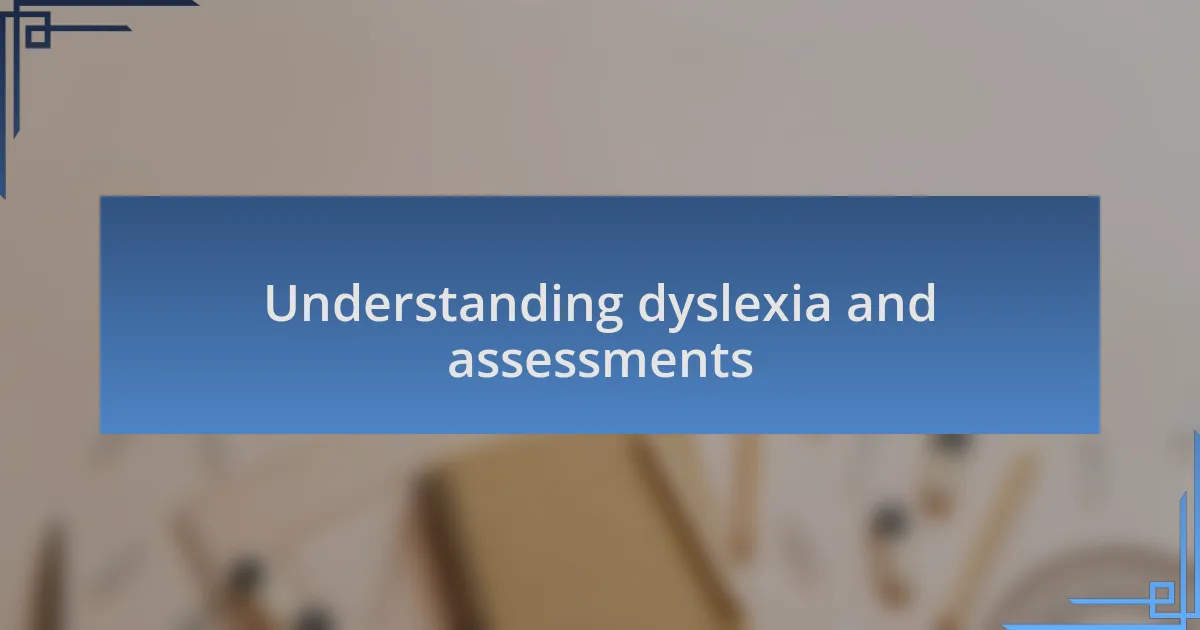
Understanding dyslexia and assessments
Understanding dyslexia involves grasping how it affects individuals’ learning processes and challenges. I remember when I first encountered someone with dyslexia, and I was struck by their frustration with assessments that seemed to overlook their intelligence and creativity. Have you ever seen someone struggle to showcase their true potential simply because the assessment methods weren’t accommodating?
Effective assessments for students with dyslexia require a nuanced approach. Standard tests often fail to reflect the unique ways they process information, leading to inaccurate conclusions about their abilities. I’ve often felt that if assessments could just tap into a learner’s strengths rather than focusing solely on weaknesses, we would see a vastly different picture of their capabilities.
Additionally, it’s crucial to consider that dyslexia isn’t just about reading difficulties; it’s about how students interact with language as a whole. In my experience, incorporating varied formats—like oral presentations or project-based assessments—often reveals deeper insights into a student’s knowledge and skills. Wouldn’t it be wonderful if every assessment was designed to truly understand and celebrate the diverse ways we learn?
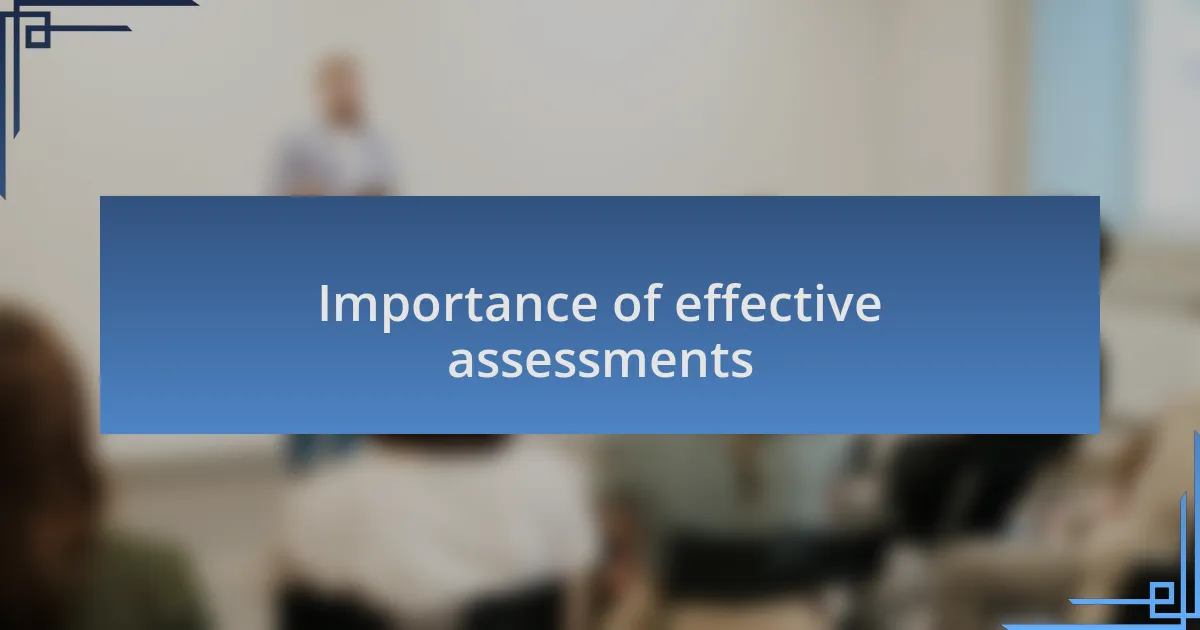
Importance of effective assessments
Effective assessments play a pivotal role in accurately identifying a student’s strengths and weaknesses. I recall mentoring a student who excelled in hands-on projects but struggled with traditional written tests. Seeing how their true capabilities emerged during a creative presentation highlighted the importance of tailoring assessments to fit diverse learning styles.
Moreover, when assessments reflect real-world applications, they become invaluable tools for both students and educators. Each time I’ve observed students thriving in assessments that mimic real-life scenarios, I realize they not only show their knowledge but also demonstrate their problem-solving abilities. Isn’t it fascinating how a shift in format can unlock such potential?
Ultimately, the emotional impact of effective assessments cannot be understated. I often think back to students who felt defeated by conventional testing methods; their self-esteem often took a hit. By creating an environment where assessments cater to their learning styles, we not only uplift their spirits but also encourage a love for learning that can last a lifetime. Don’t we all deserve a chance to shine in the ways we learn best?
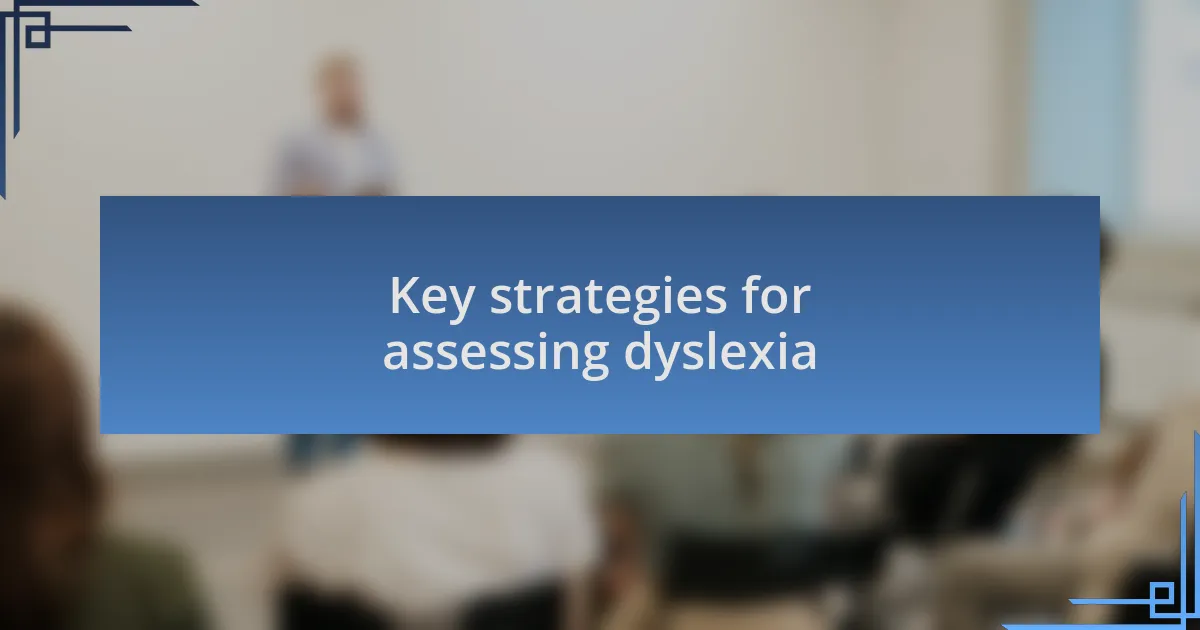
Key strategies for assessing dyslexia
One effective strategy I’ve found for assessing dyslexia is utilizing multi-sensory approaches. For instance, I remember working with a student who thrived when we incorporated visual aids and kinesthetic activities into their assessments. By engaging different senses, we not only made the process enjoyable, but we also allowed them to demonstrate their knowledge in a format that suited their learning style. Have you ever noticed how much easier it is to remember something when you can touch, see, or actively participate in it?
Another key strategy involves ongoing observations rather than relying on a single test. I’ve seen the value in continuously tracking a student’s progress over time, which provides a fuller picture of their learning journey. For one student, the cumulative insights we gathered from various informal assessments revealed patterns that standardized tests overlooked. Isn’t it fascinating how detail-oriented observations can lead us to deeper understandings of a student’s true capabilities?
Lastly, collaborative assessments can be incredibly powerful. I once facilitated group projects where students with dyslexia worked together to create presentations. Watching them lean on each other’s strengths not only built their confidence but also fostered a sense of community. It made me wonder—could this collaborative spirit be the key to unlocking hidden potential in all students?
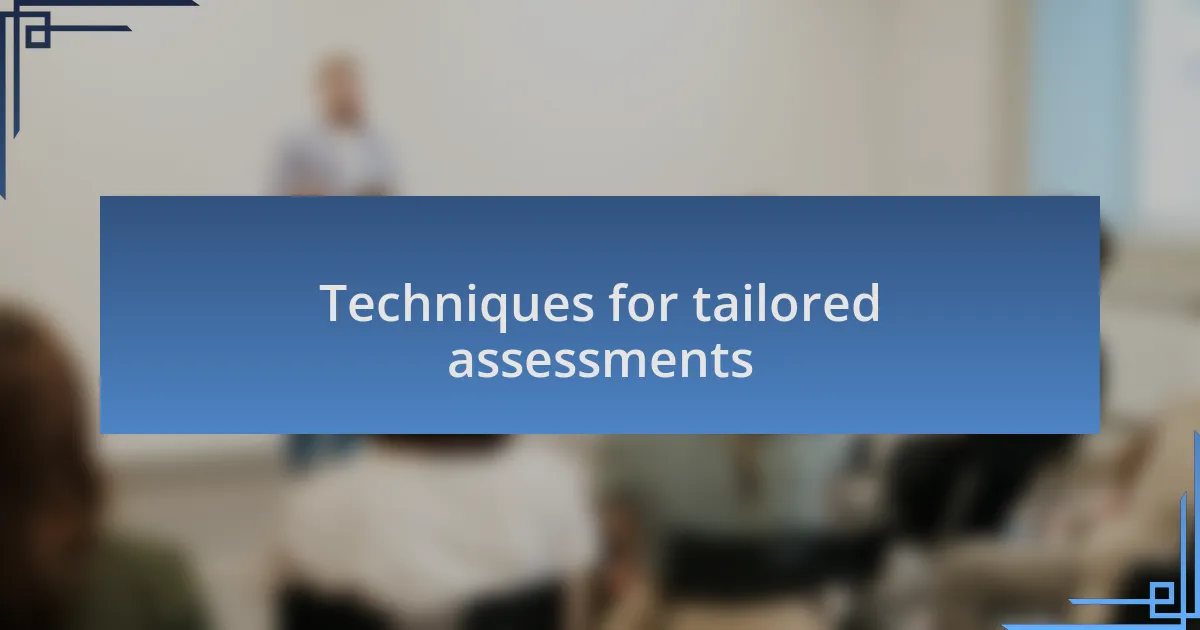
Techniques for tailored assessments
When it comes to tailored assessments, one technique I’ve found particularly valuable is the use of technology to adapt tasks for students with dyslexia. For example, I once introduced digital tools that read text aloud, allowing a student to focus on understanding concepts rather than getting bogged down by decoding challenges. It became a game changer; seeing their relief and excitement was a rewarding reminder of how accessible learning can transform a student’s experience.
Another approach I frequently employ is creating personalized assessment rubrics. I remember designing a rubric for a student who was uncertain about their writing skills. By breaking down the criteria into manageable parts, we focused on their strengths first, which led to a noticeable increase in their confidence. Isn’t it amazing how a tailored rubric can turn what seems like a daunting task into an achievable goal?
Lastly, incorporating storytelling elements into assessments can be incredibly engaging. For instance, I had a student who loved to share stories. By allowing them to weave their knowledge into a narrative format, they not only demonstrated their understanding but also showcased their creativity. Who doesn’t love a good story? It’s a reminder that assessments can be more than just tests—they can be avenues for expression and connection.

Adapting assessments for individual needs
Adapting assessments for individual needs is not only about modifying tasks but also about fostering an environment where students feel valued. I once worked with a student who struggled with traditional timed tests. By offering a flexible time frame, I noticed their stress levels decrease significantly. Isn’t it remarkable how a simple adjustment can unlock a student’s true potential?
Another crucial aspect is providing varied formats for demonstrating knowledge. I recall collaborating with a young learner who thrived when presenting information visually. By allowing them to create infographics instead of writing essays, they could express their understanding brilliantly. It made me wonder—what if we all had the freedom to choose how we showcase our strengths?
In my experience, continuous feedback is essential when adapting assessments. I often check in with students throughout the process, prompting them to evaluate their own work. This not only boosts their self-awareness but also empowers them to take ownership of their learning. Isn’t that the ultimate goal in education—to nurture confident and independent thinkers?
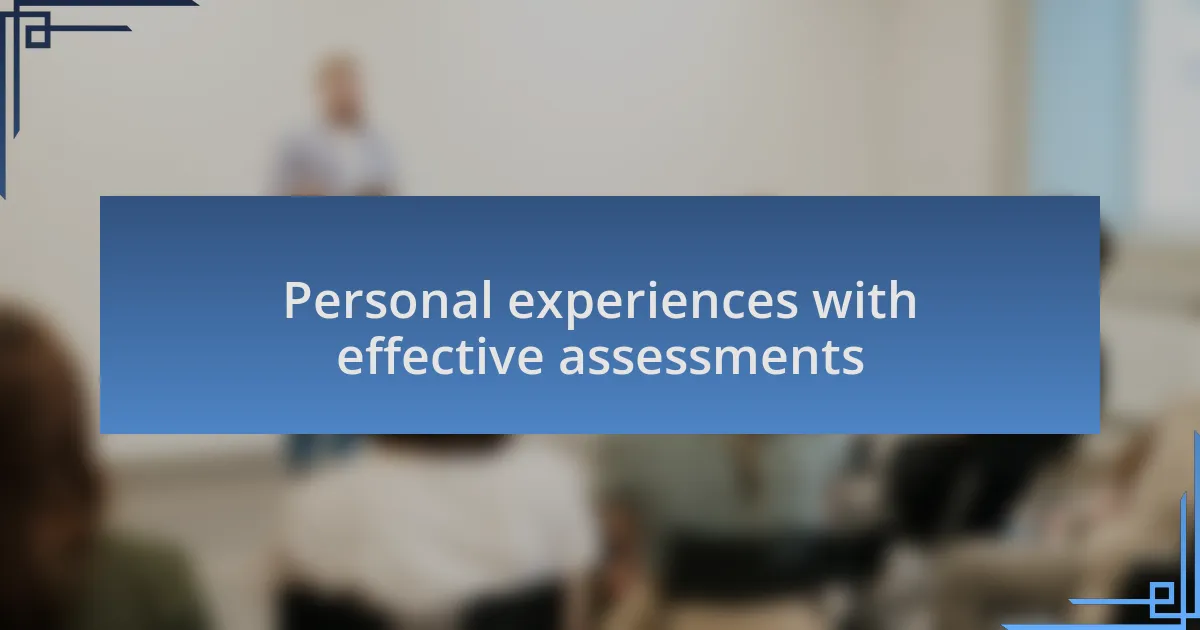
Personal experiences with effective assessments
One of my most impactful experiences with assessments was when I introduced oral presentations for a group of students who found reading comprehension tests daunting. I had a student named Alex, who often felt overwhelmed by written assessments. When I allowed him to demonstrate his understanding verbally, his confidence soared. Watching him articulate his thoughts made me realize how vital it is to recognize and harness different strengths in learners. Have you ever seen someone light up when given the right opportunity?
I also remember a project where I used interactive assessments, such as role-playing scenarios, for my students. It was fascinating to see how engaged they were while acting out historical figures. One student, Sarah, truly shined in this setting, showcasing her ability to connect with the material deeply. Her zest for learning reminded me that assessments don’t have to stifle creativity; they can ignite passion if tailored correctly. Isn’t it inspiring to witness students thrive when assessments align with their interests?
In my journey, I’ve learned the importance of reflection after each assessment. I often encourage students to share their thoughts on what worked for them and where they felt challenged. This practice not only reinforces their learning but also brings to light different perspectives on the assessment process. It’s a powerful moment when students realize their voices matter, don’t you think? Listening to their feedback has taught me that assessments should be a two-way street, fostering growth for both students and educators.